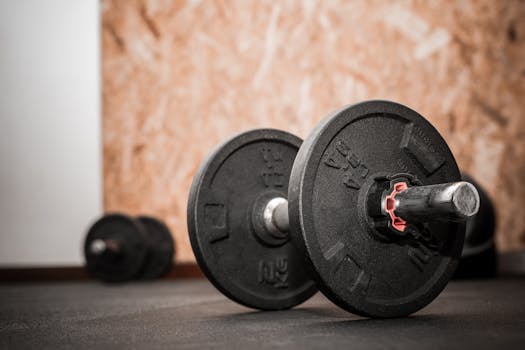
Unlocking Fat Loss: The Power of High-Intensity Interval Training
Takeaways: High-Intensity Interval Training (HIIT) is an efficient workout method that can lead to significant fat loss. This article will outline what HIIT is, its benefits for fat loss, and provide guidance on how to implement this training style into your routine.
High-Intensity Interval Training, or HIIT, has become a buzzword in the fitness community for its effectiveness and efficiency. Unlike traditional steady-state cardio, HIIT involves short bursts of intense exercise followed by rest or low-intensity periods. This approach not only saves time but also maximizes calorie burn and boosts metabolism, making it a popular choice for those looking to lose fat.
What is High-Intensity Interval Training?

During a HIIT workout, you might go all out for 20-30 seconds, followed by a 10-30 second recovery period. This cycle can be repeated multiple times, depending on your fitness level and goals. The intensity of the workout is what sets HIIT apart from other training methods. By pushing yourself to your limits during the high-intensity intervals, you can achieve greater fitness gains in a shorter amount of time.
The Benefits of HIIT for Fat Loss

- Increased Caloric Burn: HIIT workouts are designed to elevate your heart rate, leading to a higher calorie burn in a shorter time frame compared to traditional workouts. Studies have shown that HIIT can burn up to 30% more calories than other forms of exercise.
- Afterburn Effect: HIIT can elevate your metabolism for hours after your workout. This phenomenon, known as Excess Post-Exercise Oxygen Consumption (EPOC), means your body continues to burn calories long after you’ve finished exercising.
- Time Efficiency: With workouts typically lasting 20-30 minutes, HIIT fits easily into a busy lifestyle. You can achieve a substantial fat loss effect without spending hours at the gym.
- Diverse Workout Options: HIIT can be customized to fit any fitness level and can be done anywhere. Whether you prefer bodyweight exercises, running, or cycling, HIIT can be adapted to your preferences.
- Improved Cardiovascular Health: HIIT enhances your heart’s efficiency and improves blood circulation, reducing the risk of heart disease and other cardiovascular issues.
How to Get Started with HIIT
If you’re ready to incorporate HIIT into your routine, here’s a simple guide to help you get started:
- Choose Your Exercise: Decide on the type of exercise you want to perform. Options include sprinting, cycling, jumping rope, or bodyweight exercises such as burpees or squat jumps.
- Determine Your Intervals: A common approach is to work hard for 20 seconds, followed by 10 seconds of rest. You can adjust the ratios based on your fitness level, such as 30 seconds of work and 30 seconds of rest.
- Warm Up: Always start with a warm-up to prepare your body for high-intensity work. Spend 5-10 minutes engaging in light aerobic activity.
- Start Your HIIT Workout: Begin with 15-20 minutes of HIIT, incorporating multiple intervals of work and rest. As you progress, you can increase both the duration of the work intervals and the total time spent on HIIT.
- Cool Down: Finish your workout with a cool down to help your body recover. Stretching and light activity can help prevent injury.
Conclusion
High-Intensity Interval Training is a powerful and effective method for fat loss that fits seamlessly into any lifestyle. Its ability to maximize calorie burn and boost metabolism makes it a favorite among fitness enthusiasts and those looking to shed unwanted pounds. By incorporating HIIT into your routine, you can achieve significant results in less time, all while enjoying a variety of workout options. Whether you’re a seasoned athlete or just starting out, HIIT can be tailored to your fitness level, making it an excellent choice for anyone serious about fat loss.







